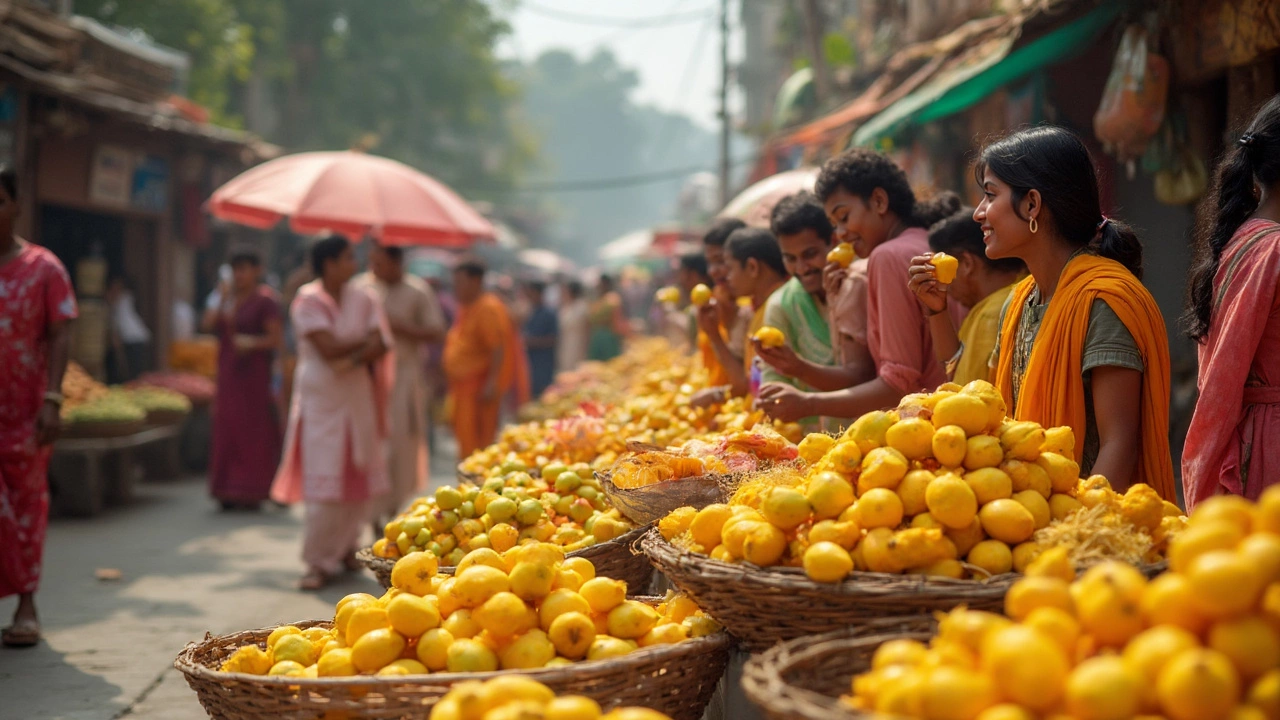Mango Growing Tips for Indian Gardens
If you love fresh mangoes, growing your own tree is a rewarding choice. The climate in most parts of India is perfect for mango, but a few simple steps can make the difference between a shy tree and a heavy‑fruiting one.
Choosing the Right Site and Soil
Pick a spot that gets at least six hours of sunlight every day. Mango trees love heat, so a sunny location helps them flower and set fruit. The soil should drain well; loamy or sandy‑loam soils work best. If the ground stays soggy after rain, consider raising the planting area or adding coarse sand to improve drainage.
Before you dig, test the soil pH. Mango prefers a slightly acidic to neutral range (pH 5.5‑7). Adding a handful of garden lime can raise pH, while a little organic compost can lower it. A well‑balanced soil gives the young roots a strong start.
Managing Water, Nutrients, and Pests
Water your mango sapling regularly for the first three months, keeping the soil moist but not water‑logged. After the tree is established, cut back watering to once a week in summer and less during the monsoon, as mango tolerates drought better than over‑watering.
Feed the tree with a balanced NPK fertilizer (10‑10‑10) twice a year – once at the start of the growing season and again after the fruit set. A slow‑release organic fertilizer works well too. Too much nitrogen can produce leafy growth but fewer fruits, so follow the label.
Pest problems are common, but most can be handled without chemicals. Scale insects and mango weevils love the tender shoots. A spray of neem oil every two weeks helps keep them in check. For larger infestations, prune out the affected branches and dispose of them away from the garden.
Pruning is another key practice. In the first two years, shape the tree to a strong central trunk with three to four main limbs. Remove any crossing or weak branches. After the tree starts fruiting, thin out overcrowded branches to improve air flow and light penetration. This reduces disease risk and lets the remaining fruits grow bigger.
When it’s time to harvest, look for the classic mango aroma and a change in color to a golden hue. Gently lift the fruit; a slight tug should release it. If the mango feels hard, let it ripen on the tree for a few more weeks – the flavor improves.
By following these easy steps, you can turn a small mango sapling into a reliable source of sweet fruit. Keep an eye on soil moisture, feed the tree at the right times, and prune regularly. Within a few years, you’ll be enjoying home‑grown mangoes straight from your garden.
India's National Fruit: The Mango Explained
India’s national fruit, the mango, is more than just a tasty treat; it’s part of daily life, traditions, and even city streets. This article dives into why mango got the top spot, the best ways to enjoy and grow them, and tips if you want to add mango trees to your garden. You’ll also get some fun facts you probably haven’t heard, and easy ways to spot the best varieties out there. Whether you’re snacking, planting, or just curious, you’ll find real-world info you can use.
About
Vegetable Gardening
Latest Posts


Unveiling the Supreme Superfood: A Guide to Vegetable Gardening in India
By Alden Thorne Feb 1, 2025

Which Ethnicity Consumes the Most Rice Daily?
By Alden Thorne Mar 16, 2025

Most Beautiful Flower in the World: What Truly Stands Out?
By Alden Thorne May 29, 2025

